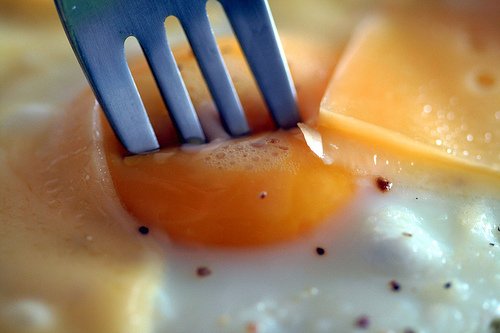
© photo
Says Brierley Wright, a nutritionist who writes articles for EatingWell magazine:
One day I went to the presentation ceremony of the new MyPlate nutrition methodology at the US Department of Agriculture in Washington, DC, and met Michelle Obama there! Can you imagine, we met in the right place and at the right time, I did not miss my chance and asked the first lady a question about what she had for breakfast that day. For breakfast, Mrs. Obama ate scrambled eggs, some turkey sausage and fresh grapefruit. Delicious, healthy food, besides, it is quite suitable if you eat according to the MyPlate method. Only grain and dairy products were missing. There was also a little lack of vegetables, but, in principle, we can say that she replaced them with fruits. Plant food was present, so everything is fine.
This case made me and other editors of EatingWell think, do nutritionists who develop various methods themselves eat properly? Is their breakfast similar to what is offered to eat according to the MyPlate method?
A little bit about the MyPlate diet itself. There are three main points to follow:
1. Keep a balance: enjoy your meal, but never overeat.
2. What is:
3. You should reduce your salt intake and drink water instead of sugary drinks.
Here's what I usually eat for breakfast: oatmeal on water with fresh or frozen fruit (depending on the season) and maple syrup, two cups of coffee with skim milk.
In order for my breakfast to fit the MyPlate diet, I need to add more vegetables and fruits and replace one of the cups of coffee with a latte to get a little more protein, but so that the product is low in fat.
Next, experts in the field of healthy nutrition will tell about their breakfasts.
David Katz, MD, Consultant to EatingWell Magazine and Director of the Yale University Research Center:
Almost every day for breakfast I eat a mixture of berries (blueberries, raspberries, blackberries) with whole grains, sometimes I add some other fruits instead of berries, for example, a banana or an apple cut into cubes, I also eat low-fat Greek yogurt.
I would say that my breakfast is perfectly combined with the MyPlate system, and in some ways even surpasses it. After all, I only eat whole grains. Greek yogurt is the most nutrient—rich dairy product, and berries contain a lot of vitamins and nutrients, much more than in many other fruits. So this is the champion's breakfast! At least I hope so!
Rachel Johnson, Ph.D., consultant to EatingWell Magazine, Professor of dietetics at the University of Vermont, Vice Chairman of the Committee for the Development of Diets for the American Heart Disease Association, member of the Presidential Council on Sports, Nutrition and Healthy Lifestyle:
7.30 am: large latte with skimmed milk (very hot) from Starbucks coffee shop
9.00 am: sandwich of a thin slice of whole-grain bread with almond butter and maple-pumpkin butter.
11.00 am: Whole grain "Heart-to-Heart" muesli with fresh strawberries and blueberries and skim milk.
So, my breakfast is exactly the same as MyPlate: fruits (strawberries, blueberries), vegetables (pumpkin), whole grains (sandwich, muesli), protein (almond butter), dairy products (skim milk).
Karen Ansel, representative of the American Dietetic Association and co-author of the Cookbook for children and toddlers (Weldon Owen, 2011):
Breakfast: a cup of coffee with 1% milk, a small glass of orange juice enriched with calcium (sometimes fresh berries instead of juice), a glass of 1% milk and oatmeal with a tablespoon of flaxseed oil.Is breakfast comparable to MyPlate: As you can see, there are no vegetables at all. I didn't think it was worth eating vegetables for breakfast. By the way, some breakfast options presented on the MyPlate website suggest replacing vegetables with a double portion of fruit. And in some places, a glass of milk has been replaced with something else that also gives proteins, and this is great, because not everyone will be able to eat all the necessary products for breakfast, and even wash it all down with a glass of milk.
It seems my weakness is the lack of vegetables. Perhaps next time I will add juices and berries to the diet.
Bonnie Taub-Dix, author of "Read It Before You Eat It" and expert on weight loss diets:
For breakfast I eat banana-almond cake, cottage cheese and yogurt.
Is breakfast comparable to MyPlate: The cupcake is made of wholegrain flour, almonds are a sufficient amount of vegetable fats, cottage cheese and yogurt are not fat—free, contain the necessary amount of fats and proteins. Vegetables for breakfast are somehow unusual, and I believe that most people will refuse it. Maybe in the morning to focus on fruits, and leave vegetables for lunch, dinner or snacks?
And what do you think is better to eat for breakfast to recharge your energy? Do you follow any diets? What do you think about the MyPlate system?
via